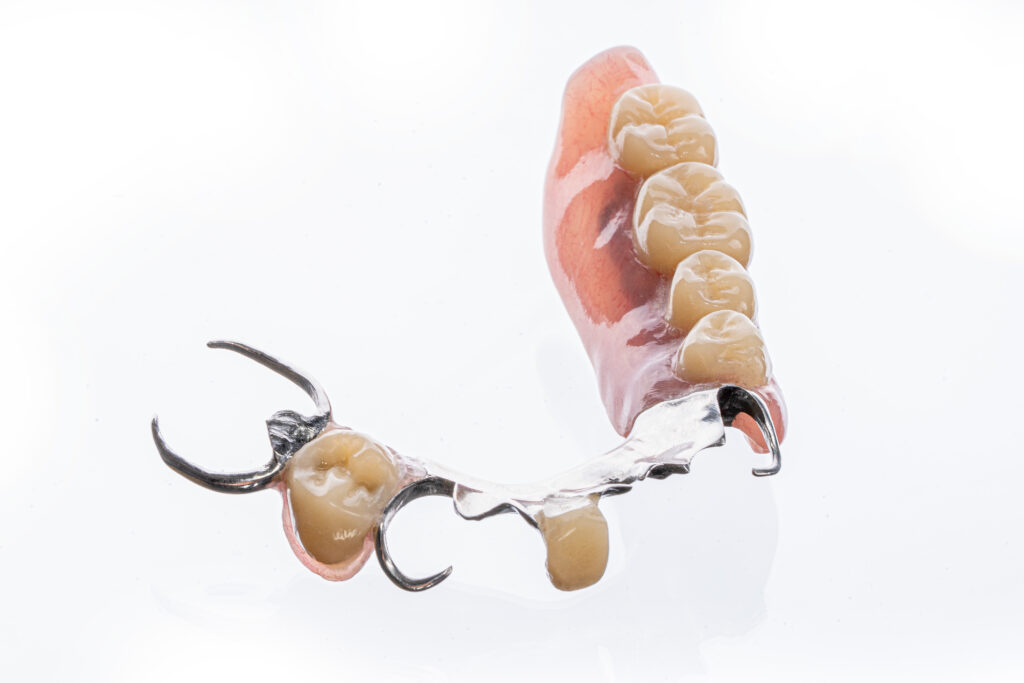Removable Partial Dentures

When only a few natural teeth remain, and they are healthy enough to support a removable prosthesis, the most cost-effective solution may be a removable partial denture. The reason this type of prosthesis is referred to as a removable partial denture is because patients can remove and reinsert them without the help of the dentist, as opposed to a “fixed” prosthesis on teeth or implants which is not removable by the patient. A removable partial denture (RPD) is for a partially edentulous dental patient who desires to have replacement teeth for functional or aesthetic reasons, and who cannot have a bridge (a fixed partial denture) for any number of reasons, such as a lack of required teeth to serve as support for a bridge or due to financial limitations.
Complete Dentures

Twenty-six percent of the U.S. population between the ages of 65 and 74 years of age are edentulous (have no remaining natural teeth). While that percentage is declining, many seniors receive life-extending prescription medications which can reduce the protective flow of saliva resulting in a dramatic increase in tooth decay. Coupled with the increase in life span, the expected demand and need for complete denture services is not expected to decline for many years. What is most important is that, when faced with the unfortunate inevitability of making the transition from a natural to a completely artificial dentition, the patient can accomplish it in a way that maximizes a successful adaptation. The modern transition is usually accomplished with the use of what are termed “immediate” or “transitional” prostheses, whereby the removal of the hopeless teeth is conducted in phases, with replacement at the time of removal or within 24 hours. Therefore, the patient is never without teeth.
Implant Supported Dentures
Implant supported dentures are secured in place by dental implants instead of simply resting on the gums as conventional dentures. Denture implants can provide a stable denture foundation for patients who have lost all of their natural teeth but have maintained adequate jaw bone mass to support implants. The use of denture implants can improve significantly the quality of life for patients wearing removable dentures. Implant supported dentures provide several advantages over conventional dentures including improved comfort, chewing ability, appearance, speech and confidence.
Implants are also important in minimizing further bone loss. Once all the teeth have been lost, a process known as alveolar bone resorption begins. The boney housings that once encased and held the teeth in place start to melt away beneath the chewing pressures of the dentures. This occurs about three times faster in the lower jaw than in the upper jaw, and may have already gotten a head start in patients who lost their teeth due to gum disease. While there is still sufficient bone left to consider the option, as little as two dental implants placed in the bone beneath the dentures dramatically slows the resorption process, and four or more can stop it altogether even if no further work is done. After receiving implants most patients will choose to add connecting devices to anchor the dentures in place and created a “fixed-detachable” prosthesis (one that stays solidly in place during chewing but is removable for mouth hygiene) or even a fully fixed prosthesis that is only removable by the dentist for professional cleaning or should repairs become necessary.
